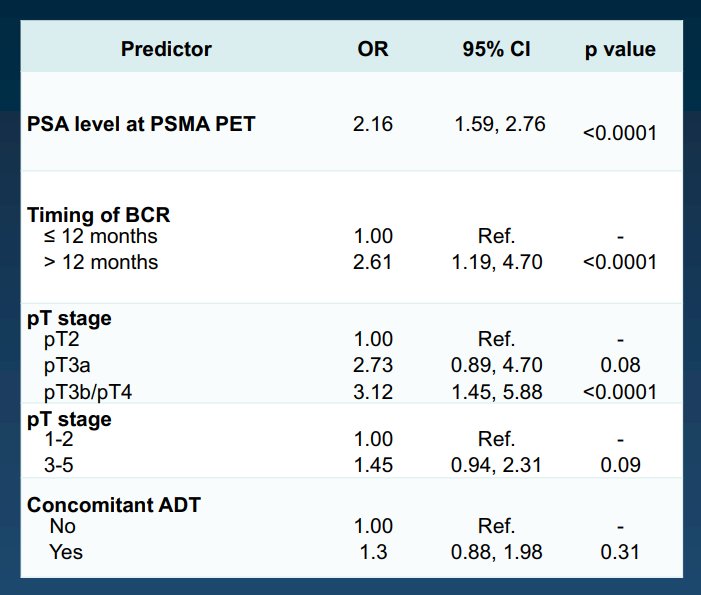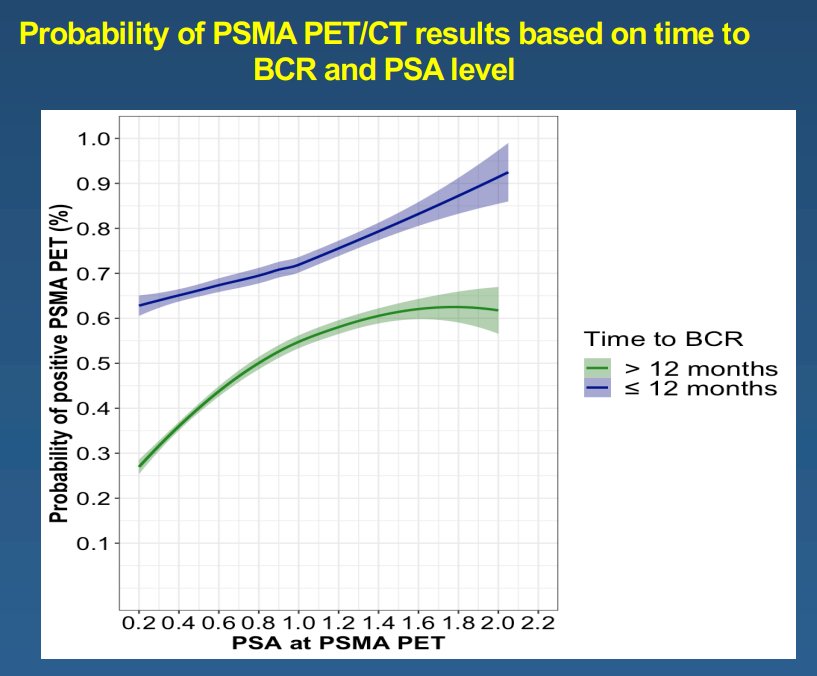(UroToday.com) In a moderated poster presentation at the 2022 American Urologic Association Annual Meeting held in New Orleans and virtually, Dr. Robesti discussed work examining the optimal role of 68Ga-prostate specific membrane antigen (PSMA) PET/CT in patients with biochemical recurrence (BCR) after radical prostatectomy (RP). While PSMA-PET/CT is gaining an increasingly large role in this disease space, selecting most appropriate patients to undergo this imaging is important to spare low risk patients from a potentially unnecessary staging procedure.
To address this, the authors retrospectively identified 207 patients evaluated with PSMA PET/CT for BCR after RP between 2016 and 2021 at single center. They examined the association between the serum PSA level at the time of PSMA-PET/CT imaging and the probability of positive imaging using multivariable logistic regression, after stratification for time to BCR (≤12 months or PSA persistence vs. >12 months). Multivariable models included the following covariates: ISUP grade group, pN and pT stages. The relationship between PSA and positive PSMA PET probability was graphically explored using the Lowess function, after stratification for time to BCR.
At the time of PSMA-PET/CT, the median PSA was 1.0 ng/ml (IQR: 0.40-1.89). Overall, 80 patients (38%) experienced early BCR or PSA persistence after RP while the remainder had BCR more than 12 months following surgery. When included in multivariable logistic regression models, higher PSA level at PSMA PET (OR 2.16, p=0.001) and early BCR <12 months (OR 2.61, p=0.01) were both significantly associated with increased probability of positive PSMA PET.

Using a Lowess analysis, among those patients with early BCR or PSA persistence, the probability of positive PSMA PET was high even at low PSA levels and progressively increased with higher PSA level, with rates ranging from 63 to 93%. Conversely, in patients with late BCR, the probability of positive PET was lower than 40% for PSA values <0.5 ng/ml and a substantial plateau was observed PSA values higher than 1.2 ng/ml.

Thus, the authors conclude that the PSA level at the time of PET PSMA and time from surgery to BCR are significantly associated with the probability of radiographic evidence of disease on PSMA PET. In patients with early prostate cancer recurrence or PSA persistence after RP, the authors advocated for PSMA PET even at low PSA levels given its high diagnostic value. Conversely, patients with late BCR may not benefit from the addition of PET PSMA scan and should be, therefore, carefully counselled based on PSA levels.
Presented by: Daniele Robesti, MD, Vita-Salute San Raffaele University


